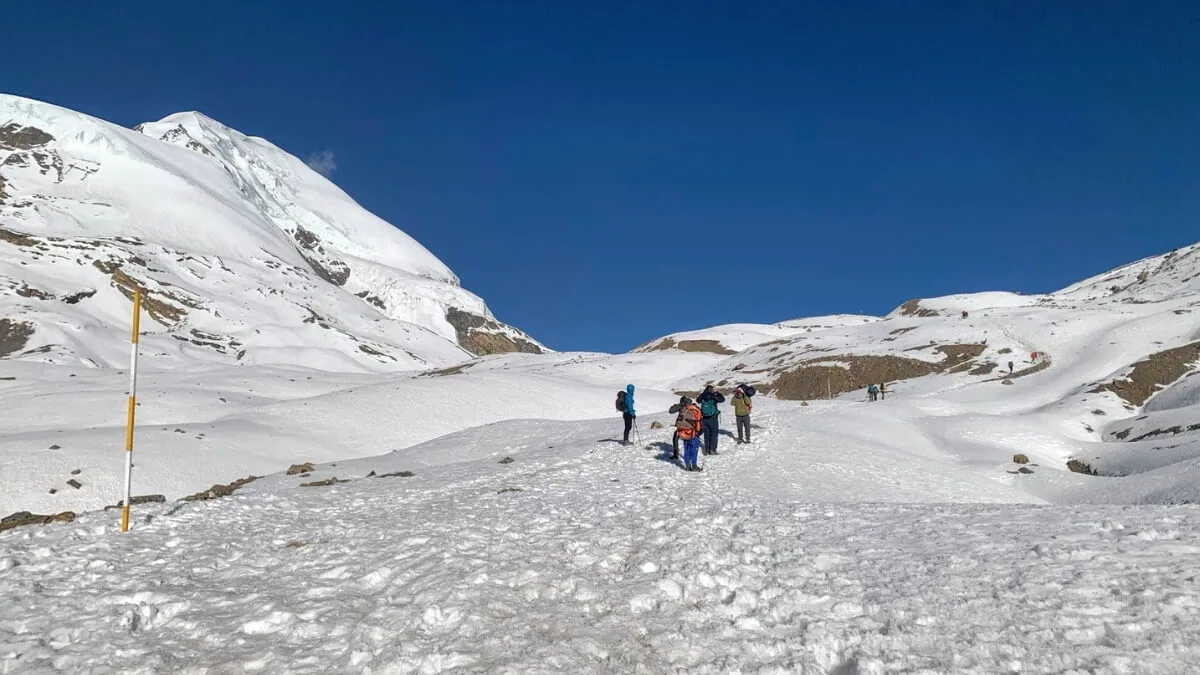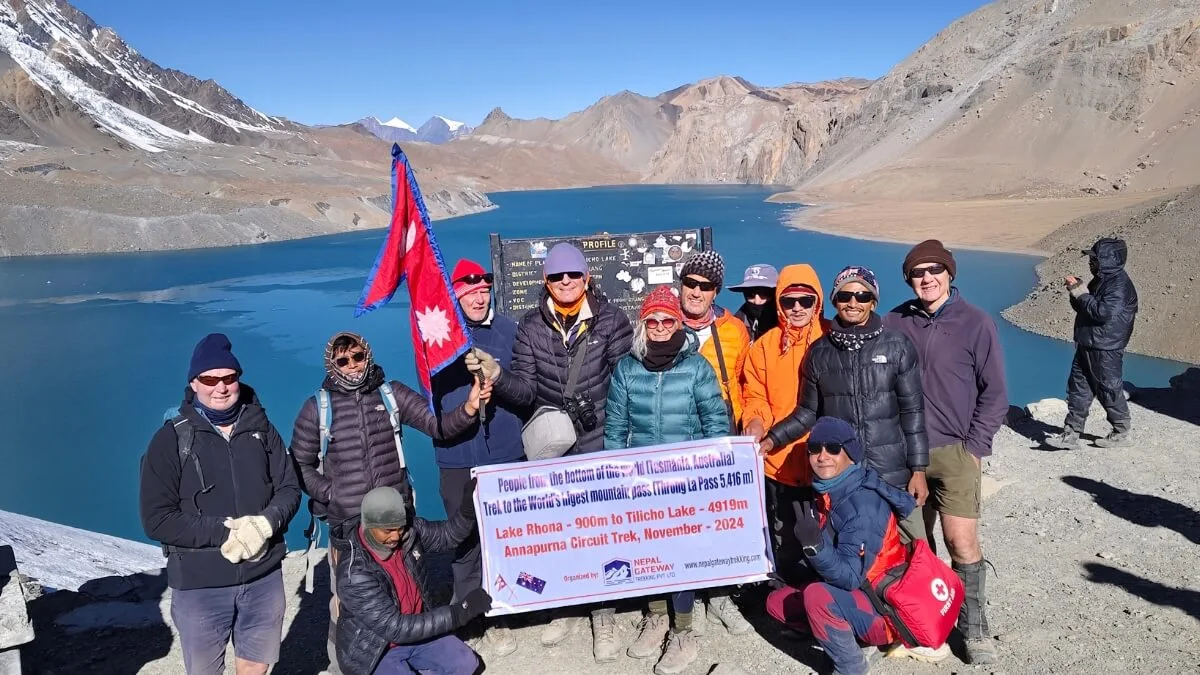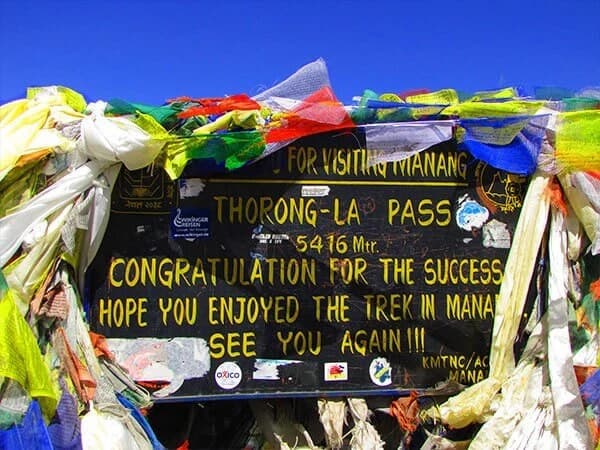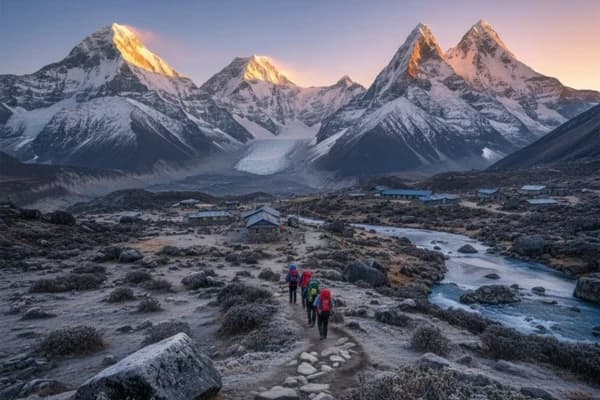Yes, beginners can do the Annapurna Circuit Trek, but it requires proper preparation. While the trail doesn't involve technical climbing, it is a high-altitude trek covering 160 to 230 kilometers and reaching as high as Thorong La Pass at 5,416 meters.
For beginners, success depends on going at a steady pace, allowing time to acclimatize, and doing some physical training in advance to build stamina and endurance.
Many first-time trekkers complete the circuit successfully by preparing well, hiring a guide or porter for support, choosing a longer itinerary to avoid overexertion, staying hydrated, eating healthy, and being aware of altitude sickness symptoms.
With reasonable fitness, good planning, and determination, the Annapurna Circuit can be a rewarding and achievable adventure for beginners.
In this blog, we'll guide you through the difficulties, preparation required, and expert guidance to ensure your first Himalayan journey is both successful and immensely satisfying.
Ready to find out if the Annapurna Circuit is right for you? Speak to our trekking specialists today for a free consultation.
Plan Your Trek with Nepal Gateway Trekking
Annapurna Circuit Trek Difficulty and Terrain Overview
Annapurna Circuit is a well-known route winding through lush valleys, vibrant towns, and stunning mountain passes, providing visitors with wonderful up-close views of the Himalayas. The trek is physically demanding, but anyone who is persistent and reasonably fit may finish it. The trail provides a unique experience with new views and friendly local villages at every turn for hikers of all skill levels.
The Annapurna Circuit Trek typically takes 12 to 20 days to finish and can range in length from 160 to 230 km, depending on the route you choose. Thorong La Pass, which is an amazing 5,416 meters (17,769 feet) above sea level, is where you will reach your highest point. Passing through hospitable, isolated Himalayan communities, the trip provides an intriguing variety of pathways that range from meandering through verdant forests and scaling historic stone stairs to traversing breathtaking suspension bridges and snow-capped mountain passes.
The Annapurna Circuit is a tough choice if you're searching for a journey that offers diversity, excitement, and cultural immersion at every turn!
Not sure if your fitness level matches the trek? Nepal Gateway Trekking will help you assess and build a customized trip plan.
Annapurna Circuit Trek Challenges for Beginners

The Annapurna Circuit Trek is challenging but definitely within reach for beginners who are prepared and up for an adventure. On a difficulty scale of 1 to 5, most would rate it around a 4. What makes it tough isn’t technical climbing or dangerous trails; it’s the long walking days, the high altitude, and the mental grit required to keep going, especially as you get closer to Thorong La Pass, which sits over 5,400 meters above sea level.
The air gets thinner, the nights get colder, and the comforts become fewer. You’ll be sleeping in basic tea houses, dealing with shared toilets, and possibly going without Wi-Fi for days. That said, it’s not Everest, and it’s not impossible.
If you’re reasonably fit, can walk for several hours a day, and are okay with being outside your comfort zone, you can absolutely do it. And with a good guide, smart pacing, and a bit of pre-trip training, this trek can turn into one of the most rewarding experiences of your life.
High Altitude
- Thorong La Pass is above 5,400 m, where the oxygen is 50% of sea level.
- The risk of AMS (acute mountain sickness) increases without proper acclimatization.
Cold & Remoteness
- Nights below freezing after 3,000 m.
- Basic tea houses, no central heating, limited Wi-Fi, and shared toilets.
Long Days
- Daily hikes range from 5 to 8 hours.
- Uphill climbs can be relentless (especially before Thorong La).
Worried about altitude or long walking days? Explore Beginner-Friendly Short Annapurna Circuit Trek Package - 11 Days
What Kind of Beginners Can Complete Annapurna Circuit Trek?
The Annapurna Circuit will not be the same for every first-time hiker. Some might find it easy and enjoyable, while others might struggle harder. The difference is often due to preparation, mindset, and overall fitness. If you're willing and ready to train a little before your trip, you have a good chance of having fun and finishing this amazing adventure.
Basic Fitness
- Regular walkers, hikers, runners, cyclists, or gym-goers.
- You should be able to walk 10–15 km with a backpack on a regular basis.
Mental Readiness
- Patience for long days and unpredictable conditions.
- Acceptance of cold showers, limited food options, and shared dorms.
Openness to Support
- Willingness to go with a guide or agency
- Comfortable following pacing strategies and health advice
What are the major risks for first-time trekkers?
Major risks for first-time trekkers include altitude sickness, physical exhaustion, sudden weather changes, poor gear, getting lost, dehydration, limited medical access, and rushing the itinerary.
Altitude Sickness (AMS)
Symptoms include headache, nausea, and fatigue. Without proper acclimatization, it can be dangerous.
Fatigue & Injuries
Overexertion, slick paths, and inadequate footwear might result in exhaustion or knee injuries. Thus, pay attention to these factors.
Errors in Equipment and Gear
Trekkers who are ill-prepared suffer from inadequate jackets, inappropriate footwear, and inadequate water or medication. Also, be mindful to pack light.
Tips to Make the Annapurna Circuit Easier for Beginners

The Annapurna Circuit can be intimidating for first-time trekkers, but it's much more doable with the correct tactics. The beginner-friendly advice in this area will help your trip go more smoothly and pleasurably. Additional planning, from astute training and acclimatization to packing tips and honoring local customs, goes a long way to guaranteeing a safe, unforgettable, and confidence-boosting Himalayan adventure.
Go Slow and Acclimatize Properly
- Follow the "climb high, sleep low" rule
- Take rest days at altitude (Manang is perfect)
- Hydrate 3+ liters of water daily
Choose a Flexible Itinerary
- 16–18 days is ideal for beginners
- Don’t rush to Thorong La Pass; build up gradually
Train Ahead of Time
- Start walking 4–5 times a week with a backpack
- Include leg strength exercises and cardio training
Book with a Trusted Trekking Agency
Nepal Gateway Trekking ensures a smooth and stress-free adventure with expert guides, thoughtful itineraries, and local insight, offering you a safe, well-organized, and memorable trekking experience backed by exceptional service and careful attention.
- Accompanied by experienced guides
- Assistance with AMS checks, food, and logistics
- Porters help carry your load, reducing injury risk
- Emergency evacuation arrangements, if needed
Whether you’re new to trekking or just new to Nepal, we make your journey safe, memorable, and beginner-friendly. Begin your trek with confidence, not confusion. Contact Nepal Gateway Trekking Now!!
FAQs
Do I need prior trekking experience for the Annapurna Circuit?
No, you do not need a trekking experience for the Annapurna Circuit. First-time trekkers succeed all the time with the right mindset and support.
Is the Annapurna Circuit Trek harder than Everest Base Camp for beginners?
Yes and no. Thorong La Pass is higher than Everest Base Camp, but the Annapurna Circuit has more gradual ascents and fewer steep climbs. It also offers more flexible itineraries.
What fitness level is required to complete the trek?
You should be able to walk 6–7 hours daily with breaks. Basic fitness, endurance, and some mental grit go a long way.
How many days should beginners plan for the Annapurna Circuit?
14 to 18 days is ideal to allow rest, gradual elevation gain, and scenic side treks like Tilicho Lake.
What should I pack as a beginner for the Annapurna Circuit trek?
- Down jacket
- Layered clothing
- Trekking shoes (broken-in)
- Water bottles & purification tablets
- Sunscreen, hat, sunglasses
- Lightweight sleeping bag
- Basic meds (diarrhea, altitude, pain relief)
Can altitude sickness be avoided with no prior experience?
Yes, if you go slow, hydrate, acclimatize, and follow your guide’s advice. Medications like Diamox can also help if needed.





